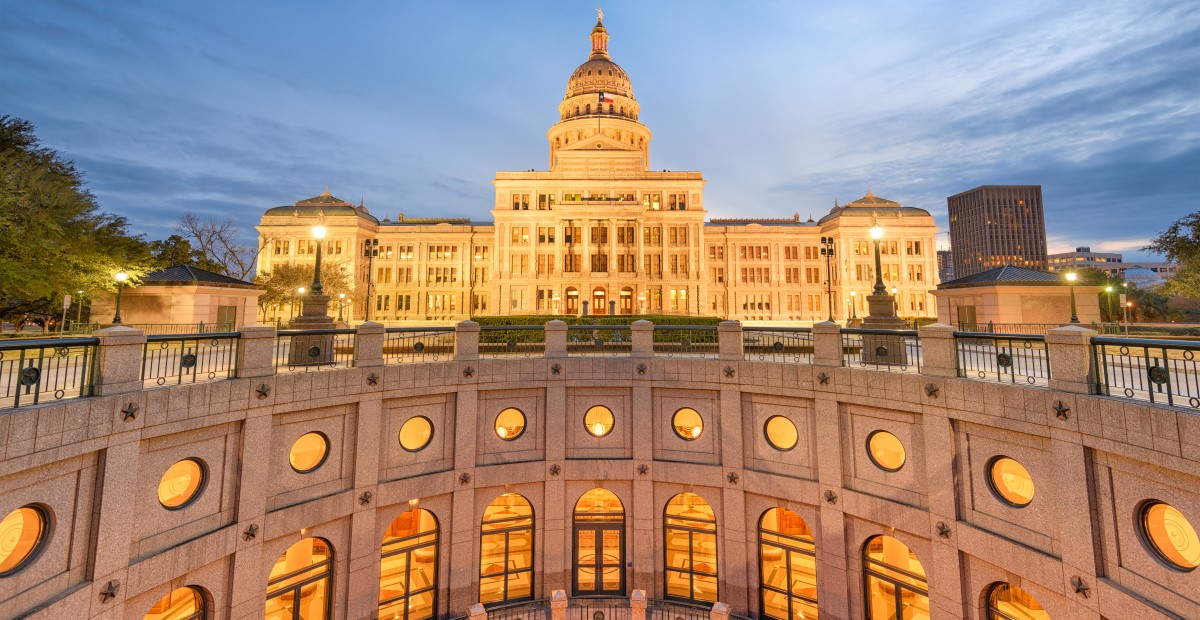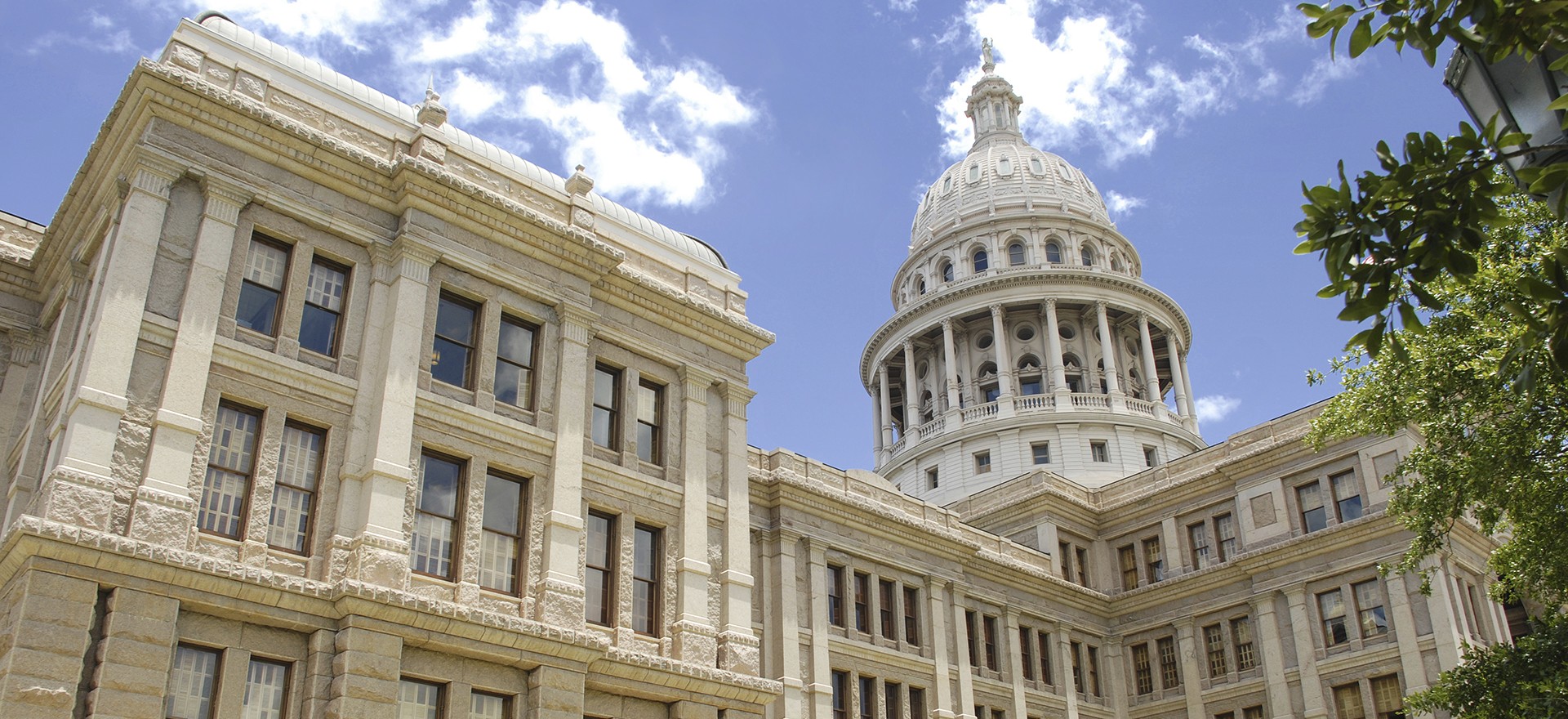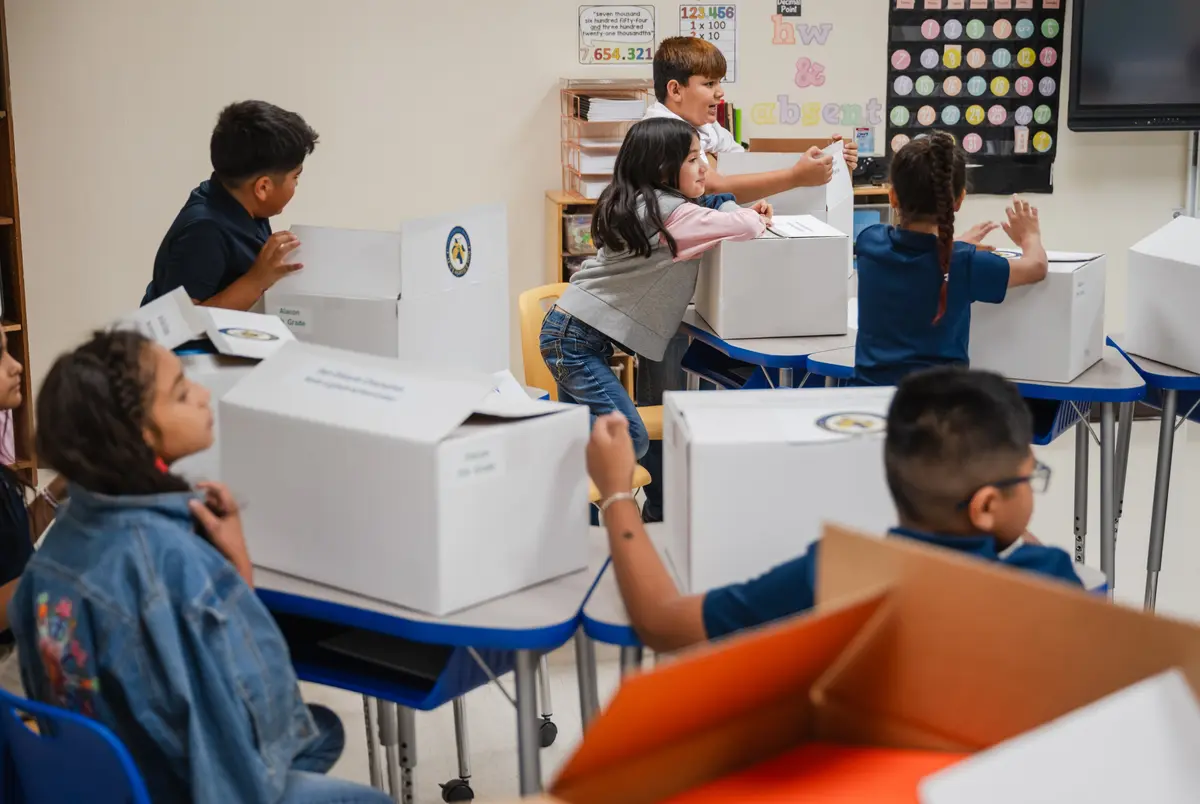From The Texas Tribune: Texas schools got billions in federal pandemic relief. It is coming to an end as the school year starts.

Date Posted: 8/07/2024 | Author: Jaden Edison, The Texas Tribune
"Texas schools got billions in federal pandemic relief. It is coming to an end as the school year starts." was first published by The Texas Tribune, a nonprofit, nonpartisan media organization that informs Texans — and engages with them — about public policy, politics, government and statewide issues.
Sign up for The Brief, The Texas Tribune's daily newsletter that keeps readers up to speed on the most essential Texas news.
The $43 million infusion the Port Arthur Independent School District received in federal COVID-19 pandemic relief funds accomplished more than Phyllis Geans could have ever imagined.
The money allowed the district to upgrade antiquated heating, ventilation and air conditioning systems. Teachers earned retention stipends at a time when many were leaving the profession. Students received new band instruments. An ambitious summer program taught them about photography, robots and skydiving.
“We were excited, really excited, because we started thinking about things that we knew were almost impossible,” said Geans, Port Arthur ISD’s assistant superintendent of operations. “It was unreal.”
Districts like Port Arthur ISD, where roughly 85% of students are economically disadvantaged, received a level of financial support they likely wouldn’t have received otherwise — and they took advantage of it by investing in community health, learning, infrastructure and safety.
But the more than $19 billion Texas schools received in Elementary and Secondary School Emergency Relief funds over the last four years will expire on Sept. 30, with a few exceptions.
The money will go away at a time when Texas schools are already struggling to keep the lights on. A number of districts are planning to enter the next school year with multimillion-dollar holes in their budgets as inflation has sent costs soaring. The Texas Legislature failed last year to approve a significant boost to the base amount of money every school receives per student — an amount that hasn’t changed since 2019 — as lawmakers fought over whether to fund private education with taxpayer dollars.
School administrators say losing the pandemic relief funds not only threatens the programs they paid for but also highlights how precarious their districts’ situation has become after years of clamoring for more state funding.
“It's not about making up ESSER, because we all knew that was one-time funding,” said La Joya ISD Superintendent Marcey Sorensen. “I just would ask, without getting political whatsoever, that everybody just look in the mirror and say, OK, if we really haven't provided additional funding since 2019, maybe it's time that we just give school districts a little bit more of what they need, knowing that kids have different needs now.”
Congress established the ESSER program in 2020 to help schools address the devastating impacts of the COVID-19 pandemic. In Texas, districts experienced significant enrollment declines and the number of burnt-out teachers exiting the profession skyrocketed. Years of educational gains unraveled as kids, parents and teachers struggled with school closures and the hurried transition to online learning.
District leaders say the federal pandemic relief funds helped them address learning disruptions and provide additional academic support for students.
“They helped us ride out the five years of no new funding from the state,” said Ronald Wilson, Hearne ISD’s chief financial officer.
Recent studies show the relief funds helped schools across the country improve test scores. For districts where most students come from low-income households, the funds were particularly meaningful, and not just for academics.
In Port Arthur ISD, where most students are Black and Hispanic and the four-year graduation rate is well below the state average, the Brilliance Academy summer program took students on an indoor skydiving trip, where they learned about wind resistance, speed and velocity. The district created a program that paid high school seniors to provide supplemental classroom instruction to elementary kids. Geans said some of the students who participated in the program later expressed interest in pursuing a career in teaching.
Meanwhile, Paris ISD established income incentives for teachers to mentor students. Hearne ISD hired behavioral specialists and social workers to assist students and their families during the pandemic. San Elizario ISD built spaces for recreational activities like playing the piano and hosted family fitness, literacy and math events.
/https://static.texastribune.org/media/files/7360eb436b7ca1f3718af87126feffe9/0723%20SEISD%20JH%2008.jpg)
“I think we were more successful in growing the whole child, on the part where we're growing young ladies and young men,” said Jerrica Liggins, Paris ISD’s secondary education director and college transition coordinator. “We gave them things that they need to be successful in the next grade level or whether they were graduating and going out into the workforce. We gave them things that helped make them a better person.”
Schools across the country have faced questions about how they’ve spent federal relief funds. District officials who used them for things like hiring more staff for their central offices, purchasing pool passes or renovating sports stadiums have received the harshest criticism.
Texas schools will likely face similar spending questions next year. Lt. Gov. Dan Patrick, who presides over the Texas Senate, recently directed that chamber’s education committee to review how public schools spent the massive influx of federal COVID-19 relief money. The review will likely focus on how districts used the funds to improve student outcomes.
Standardized test scores are one of the main ways in which student achievement and growth are measured in the state, and the same is true for how the use of pandemic relief funds has been evaluated in national studies.
In Texas, the pandemic caused a dramatic decline in learning, with reading and math scores hit particularly hard. The effects were even more profound for students who participated in online classes. Math scores have yet to rebound to pre-pandemic levels.
How to hold schools accountable for Texas students’ academic performance has also been a contentious issue in recent years. School districts have fought with the Texas Education Agency over its letter grade accountability system, claiming recent changes would hurt their ratings. School officials have argued that testing scores alone are not enough to measure school systems’ effectiveness.
What ESSER spending evaluations sometimes miss is the extent to which the relief funds helped school districts stay alive, said Amanda Brownson, deputy executive director of the Texas Association of School Business Officials.
The funds “helped them keep the doors open, helped them make sure staff were in classrooms ready to greet kids when they came back; it helped them not … collapse,” Brownson said. “What we don't have is the counterfactual: What shape would school districts be in right now if they had to manage the pandemic and had not had ESSER funding available?”
/https://static.texastribune.org/media/files/577034f8e6c88e1e758f5cc2e4539951/0723%20SEISD%20JH%2018.jpg)
Maintaining the programs Texas schools created with federal relief funds will likely be difficult without them.
A recent survey conducted by the TASBO found that out of 313 school districts across the state, nearly 80% reported deficit budgets or a lack of resources as one of their top challenges. Ninety percent of respondents said they have less than a quarter of pandemic relief funds remaining.
Gov. Greg Abbott has faced sharp criticism from public school advocates for his unwillingness to support standalone legislation to significantly boost school funding.
Since last year, Abbott has pushed for education savings accounts, which would allow families to use tax dollars to pay for their children’s private education and other school-related expenses. Opponents in the Texas House, citing worries that such a program would siphon funds away from public schools, successfully blocked the measure. But it meant public schools wouldn’t get the funding boost they wanted: Abbott had said he would veto any school funding proposal that did not include an education savings accounts program.
The governor has vowed to make a similar push when the Legislature reconvenes next year.
The uncertainty around state funding for public schools has created a situation where school districts are spending more time worrying about their financial sustainability and less about what’s best for students, said Monty Exter, governmental relations director of the Association of Texas Professional Educators.
But for low-income districts, money difficulties are not unfamiliar. And they plan to do what they’ve always done: find ways to provide for students and families with their limited resources.
Some school districts are encouraging their staff to be on the lookout for local grant opportunities. Others are thinking of asking voters to increase the tax revenue going to schools or support school bonds. Few say they are looking to the Legislature for solutions.
/https://static.texastribune.org/media/files/3db1cc009f8da76a42de3ad50326b38a/0723%20SEISD%20JH%2034.jpg)
”We're taking as much of the funding issues on ourselves and moving forward,” said Hearne ISD Superintendent Adrian Johnson, adding that he is still hopeful that legislators will do more to fund public schools.
“But we're not waiting on that to happen,” he said.
Disclosure: Association of Texas Professional Educators and Texas Association of School Business Officials (TASBO) have been financial supporters of The Texas Tribune, a nonprofit, nonpartisan news organization that is funded in part by donations from members, foundations and corporate sponsors. Financial supporters play no role in the Tribune's journalism. Find a complete list of them here.
The full program is now LIVE for the 2024 Texas Tribune Festival, happening Sept. 5–7 in downtown Austin. Explore the program featuring more than 100 unforgettable conversations on topics covering education, the economy, Texas and national politics, criminal justice, the border, the 2024 elections and so much more. See the full program.
This article originally appeared in The Texas Tribune at https://www.texastribune.org/2024/08/07/texas-schools-covid-19-pandemic-esser/.
The Texas Tribune is a member-supported, nonpartisan newsroom informing and engaging Texans on state politics and policy. Learn more at texastribune.org.
CONVERSATION
RECOMMENDED FOR YOU

12/19/2025
Teach the Vote’s Week in Review: Dec. 19, 2025
Happy Holidays from ATPE! The ACLU of Texas is challenging SB 12 in federal court, and ATPE has distributed candidate surveys to those running for statewide, legislative, and SBOE seats.

12/18/2025
Gov. Abbott’s property tax promise and the split in the Texas GOP
Property taxes aren’t just a political talking point. They’re the main revenue source for vital local services, including police, fire, and public education.

12/12/2025
Dec. 8 filing deadline sets the stage for 2026 elections
Now’s the time to confirm your voter registration and update it if necessary.


How in the world is Texas Governor Abbott allowed to hold money meant for educational expenses? Why is no one holding him accountable or talking about it?!